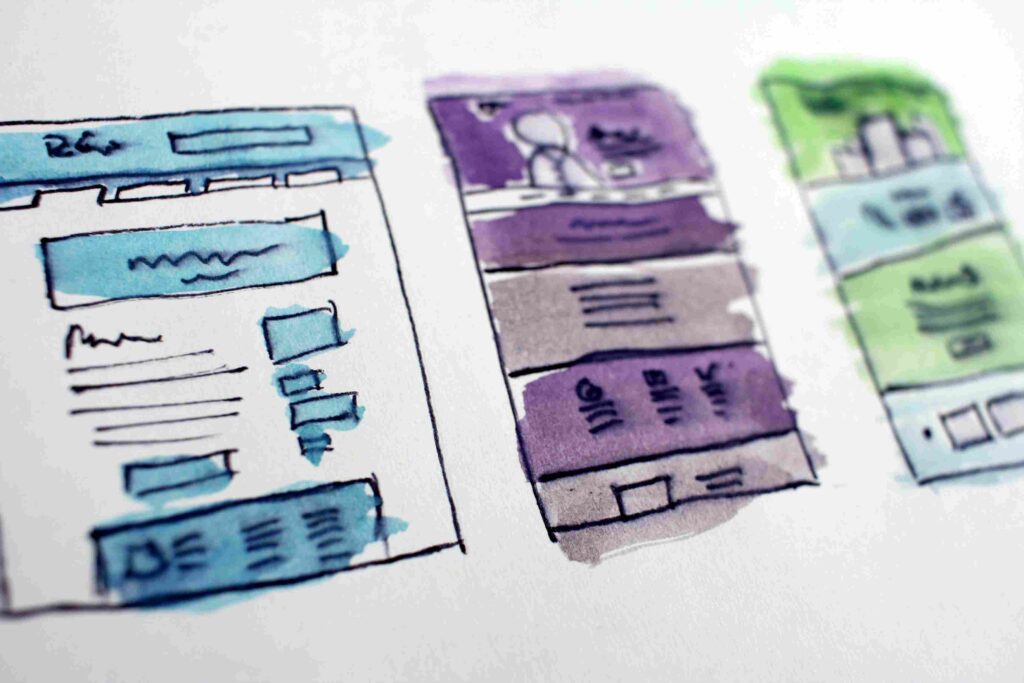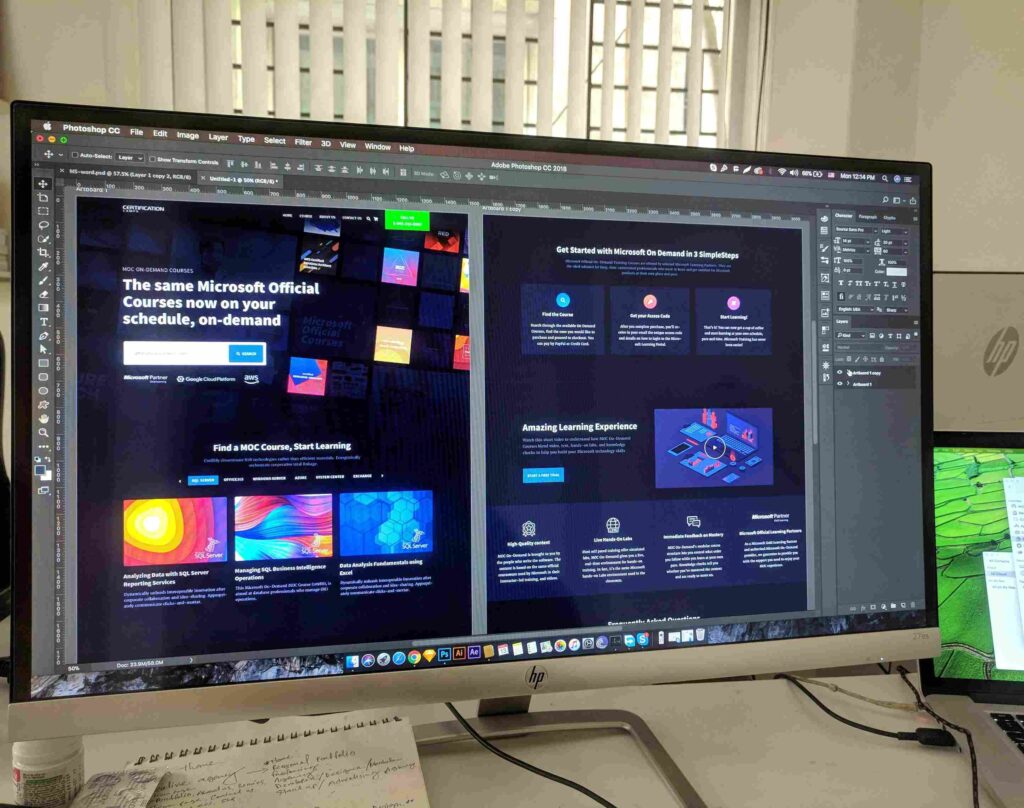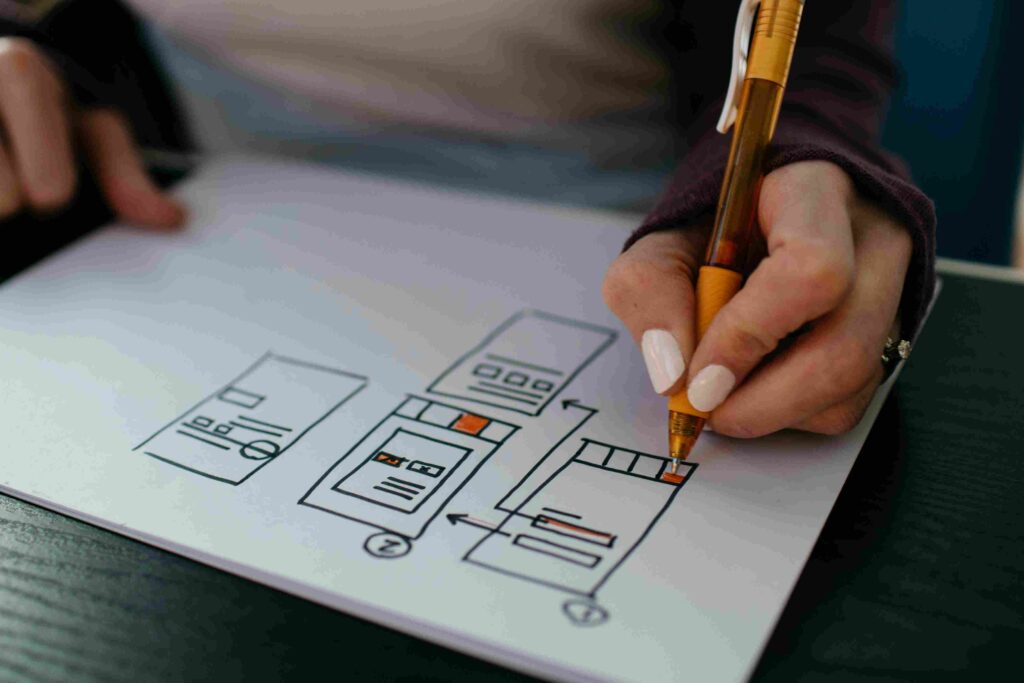Let’s face it: in 2025, if your business isn’t online, it barely exists. And just “being online” isn’t enough anymore. You need a website that doesn’t just sit there, but actively works for you, grabs attention, and turns visitors into loyal fans. That’s where top-notch website design comes in. Think of your website as your digital storefront, your 24/7 salesperson, and your brand’s biggest cheerleader all rolled into one. If it looks outdated, confusing, or just plain sad, you’re missing out big time.
Forget the dry, technical jargon. We’re going to talk about website design in a way that actually makes sense, giving you the lowdown on everything you need to know to make your site a showstopper this year. Whether you’re just starting out or looking to give your existing online presence a serious glow-up, this guide is your go-to playbook.

Why Your Website Isn’t Just a “Nice-to-Have” Anymore
Seriously, it’s 2025! People don’t just pick up the phone book (remember those?) or stumble into stores anymore. Their first stop? Google. Or Instagram. Or TikTok. They’re looking for you online. And when they find you, your website is often their very first impression.
- First Impressions Last: You get literally seconds to make an impact. A clunky, slow, or visually unappealing site? Poof! They’re gone. A sleek, fast, and intuitive site? Now you’ve got their attention. Good website design sets the stage.
- Your Digital HQ: This isn’t just about showing off. Your website is where you can truly control your narrative, showcase your products or services, collect leads, make sales, and build a community around your brand. Social media is great, but you don’t own that land. Your website? That’s your private island.
- Trust and Credibility: A professionally designed website signals to potential customers that you’re legitimate, trustworthy, and serious about what you do. Shabby website design can make even the best businesses look unreliable.
- SEO Superpower: Google and other search engines love well-designed, user-friendly websites. Solid website design directly impacts how high you rank in search results, meaning more eyeballs on your business without paying for ads.
The Building Blocks of Killer Website Design in 2025
Alright, so what makes a website truly great today? It’s more than just pretty pictures. It’s a combination of smart choices that work together to create an amazing user experience.
1. User Experience (UX): Making Life Easy for Your Visitors
Imagine walking into a store. If it’s messy, hard to find what you’re looking for, or the staff are nowhere to be found, you’re probably out the door, right? Your website is the same. UX is all about making your site ridiculously easy and enjoyable for people to use.
- Intuitive Navigation: Can people find what they’re looking for in a snap? Your menu should be clear, concise, and logically organized. Think simple.
- Clear Calls to Action (CTAs): What do you want visitors to do? “Buy Now,” “Sign Up,” “Contact Us” – make these buttons stand out and tell people exactly what will happen when they click.
- Mobile-First Design (Seriously, It’s 2025!): This isn’t just a trend; it’s the standard. Most people are Browse on their phones. Your website must look and work perfectly on a small screen. If it doesn’t, you’re losing a huge chunk of potential customers. Mobile-first website design is non-negotiable.
- Fast Loading Times: Patience is not a virtue in the digital world. If your site takes more than a couple of seconds to load, people will bounce. Optimize images, use efficient code, and choose a good hosting provider. Speed is a crucial element of good website design.
2. User Interface (UI): The “Look and Feel”
While UX is about how it works, UI is about how it looks and feels. This is where aesthetics, branding, and visual appeal come into play.
- Visual Appeal: This is your chance to shine! Use high-quality images and videos. Choose a color palette that matches your brand and evokes the right emotions.
- Consistent Branding: Your logo, colors, fonts, and tone of voice should be consistent across your entire website and all your marketing materials. This builds brand recognition and trust.
- Readability: Don’t make people squint! Choose easy-to-read fonts and ensure good contrast between text and background. Break up large blocks of text with headings, subheadings, and bullet points.
- Whitespace: Just like in a well-designed room, leaving empty space (whitespace) around elements makes your content breathe and prevents your site from looking cluttered. This is a subtle but powerful website design trick.

3. Content: The King (and Queen) of Your Castle
Even the prettiest website is useless without great content. This is what informs, engages, and converts your visitors.
- High-Quality, Engaging Text: Write clear, concise, and compelling copy that speaks directly to your audience’s needs and desires.
- Stunning Visuals: Photos, videos, infographics, and illustrations are essential. Show, don’t just tell!
- Blog/Resource Section: A blog is fantastic for providing value, answering common questions, and boosting your SEO by regularly adding fresh, relevant content. This keeps your website design alive with new material.
- Testimonials and Social Proof: Show off happy customers! Real reviews and testimonials build massive trust.
Website Design Trends You Can’t Ignore in 2025
The digital world moves fast. What was cutting-edge last year might be old news now. Here are the big trends in website design for 2025 you need to know about:
- AI-Powered Personalization: Imagine your website tailoring its content and offers based on who’s visiting. AI is making this possible, delivering hyper-relevant experiences. This level of smart website design makes users feel understood.
- Voice User Interface (VUI) Optimization: More people are using voice commands to search. Your site needs to be optimized for voice search, meaning natural language queries and clear answers.
- Accessibility for All: This isn’t just a compliance issue; it’s good business. Your website should be usable by people with disabilities (e.g., visual impairments, motor difficulties). Tools exist to help make your website design inclusive.
- Immersive Experiences (AR/VR Lite): Don’t freak out, this isn’t about building a VR headset for your product page. But elements of augmented reality (AR) or subtle interactive 3D elements are becoming more common for things like product views.
- Micro-interactions: Those little animations when you click a button or hover over an icon? They add a touch of delight and make the user experience feel polished. Great website design pays attention to these small details.
- Sustainability in Design: People care about the planet. Green hosting, efficient code, and minimal data transfer are becoming important considerations for conscious brands.
- Dark Mode Options: Offering users the choice to switch to a dark theme is a popular feature for comfort, especially on mobile devices.
Your Step-by-Step Guide to Getting That Dream Website Design
Feeling overwhelmed? Don’t be. Breaking down the website design process makes it manageable. Here’s a practical roadmap:
Step 1: The Blueprint – Planning Your Website
Before you even think about colors or fonts, you need a plan. This is like building a house – you wouldn’t just start hammering, right?
- Define Your Goals: What do you want your website to do? Generate leads? Sell products? Provide information? Be super specific.
- Know Your Audience (Really Know Them): Who are you trying to reach? What are their pain points? What do they love? The better you understand them, the more effective your website design will be.
- Competitor Analysis: What are your competitors doing right? What are they doing wrong? Learn from them.
- Content Strategy: What information, text, images, and videos will you need? Start gathering and organizing this.
- Sitemap & Wireframes: Think of a sitemap as a table of contents for your website (which pages will you have?). Wireframes are rough sketches of what each page will look like – where the images go, where the text goes, etc. No fancy design needed here, just structure.

Step 2: The Build – Choosing Your Tools & Getting It Done
Now for the fun part: bringing your vision to life.
- DIY (Do It Yourself) Website Builders:
- Who it’s for: Small businesses, startups, individuals with limited budget or tech skills.
- Pros: Easy to use, often drag-and-drop, quick setup, affordable monthly fees.
- Cons: Limited customization, less control over code, might not scale for complex needs.
- Examples (2025 Favorites): Wix, Squarespace, Shopify (for e-commerce), Webflow (a bit more advanced but powerful).
- CMS (Content Management Systems) like WordPress:
- Who it’s for: Businesses needing more flexibility, customization, and scalability. Very popular.
- Pros: Highly customizable (with themes and plugins), vast community support, excellent for SEO.
- Cons: Steeper learning curve than builders, requires a bit more technical know-how (or a developer), security updates needed.
- Note: WordPress powers a huge chunk of the internet, making it a staple in website design.
- Hiring a Professional Designer/Agency:
- Who it’s for: Businesses with specific, complex needs, custom branding requirements, or those who want a completely hands-off experience.
- Pros: Custom, unique website design, expert knowledge of UX/UI and SEO, saves you time.
- Cons: Can be a significant investment, requires clear communication of your vision.
Step 3: The Polish – Testing & Optimization
You wouldn’t open a store without making sure the lights work and the doors open, right? Same for your website.
- Thorough Testing:
- Functionality: Do all buttons work? Are forms submitting correctly?
- Responsiveness: Does it look perfect on desktops, laptops, tablets, and phones? Test different browsers too!
- Speed: Use tools like Google PageSpeed Insights to check your loading times and get suggestions for improvement.
- User Testing: Get real people (friends, family, potential customers) to navigate your site and give honest feedback. Watch them use it!
- SEO Basics (The Foundation):
- Keywords: Use relevant keywords naturally in your page titles, headings, and content.
- Meta Descriptions: Write compelling short descriptions for each page that appear in search results.
- Image Alt Text: Describe your images for visually impaired users and for search engines.
- Internal Linking: Link relevant pages within your own site.
- Mobile-Friendliness: (Already mentioned, but worth repeating for SEO!).
- Accessibility Check: Use online tools to check if your site meets basic accessibility standards.
Beyond Launch: Your Website Is a Living Thing!
Launching your website isn’t the finish line; it’s just the beginning! Think of it like a garden – it needs constant care to thrive.
- Regular Updates:
- Content: Keep your blog fresh, update product information, add new services. Fresh content keeps visitors coming back and search engines happy.
- Security: Websites are targets for hackers. Keep your software, themes, and plugins updated. Use strong passwords.
- Backups: Regularly back up your entire website. Imagine losing everything!
- Monitoring Analytics: Use tools like Google Analytics to track visitor behavior. Where are they coming from? What pages are they visiting? How long are they staying? This data is gold for refining your website design and content.
- A/B Testing: Experiment with different versions of pages, headlines, or buttons to see what performs better. Small changes can lead to big improvements in conversion rates.
- Listen to Feedback: Pay attention to what your customers are saying. Are they struggling to find something? Do they have suggestions?

Common Pitfalls to Avoid in Website Design
Even with the best intentions, it’s easy to make mistakes. Here are a few common traps to dodge:
- Overloading with Too Much Info: Less is often more. Don’t bombard visitors with walls of text or too many options. Keep it focused.
- Ignoring Mobile Users: This is still a huge problem for many businesses. If your site isn’t perfectly responsive, you’re alienating a massive audience.
- Slow Loading Speeds: This isn’t just annoying for users; Google actively penalizes slow sites. Get fast!
- Poor Navigation: If people can’t find what they’re looking for, they’ll leave. Simple as that.
- Inconsistent Branding: Your website should immediately feel like your brand. If it looks generic or disjointed, you lose trust.
- Forgetting SEO: A beautiful website that nobody can find is like a billboard in the desert. Build SEO into your website design from day one.
- Lack of Clear Calls to Action: Don’t make visitors guess what you want them to do next. Guide them!
Your Website – Your Digital Powerhouse in 2025
Building a great website in 2025 isn’t just a technical task; it’s a strategic imperative. It’s about crafting an online experience that captivates your audience, communicates your brand’s unique value, and converts visitors into loyal customers. From stunning visuals and seamless user experience to smart AI integration and constant optimization, every element of your website design plays a critical role in your digital success.
Don’t let the complexities of modern website design hold you back. Think of your website as a dynamic, living asset that, with the right attention and expertise, can become your most powerful marketing tool. If you’re looking to build a new site, revamp an old one, or just need a guiding hand through the ever-evolving world of website design, Digitalizemark is here to help. We specialize in creating high-performing, user-friendly, and visually stunning websites that not only look great but also deliver real business results. Let’s make your digital presence shine!

